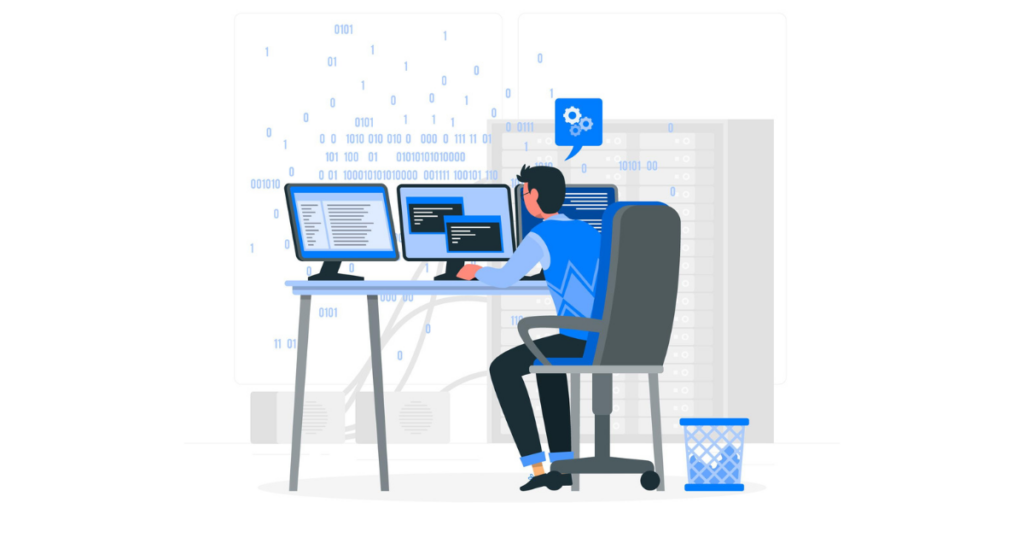The most vital thing in the dynamic world of software development is the eventless functioning of applications across platforms. Oracle VirtualBox becomes a strong virtualization product and an important tool in that process.
This blog looks into the use of Oracle Virtual PTbox in doing cross-platform QA testing. We will demonstrate how this tool can help developers and testers simulate a variety of environments to extend the testing process and increase the quality of software products.
Knowing the capabilities and configuration options available in VirtualBox will even further empower teams to conduct efficient, effective testing, and ensure applications perform well under all user scenarios.
Understanding Crossplatform QA Testing

Definition and Importance of Crossplatform QA Testing
Cross-platform QA testing is the validation of software applications on several different platforms and operating systems to ensure consistent behavior and functionality.
This type of testing is critical in today's technology world, where applications are expected to work seamlessly on a myriad of devices, from smartphones and tablets to desktops running a number of varied operating systems.
This testing across platforms detects issues specific to the platform and makes sure that the application will provide a consistent user experience, regardless of which platform it runs on.
This testing is a vital part in increasing the rate of user satisfaction, by detecting any possible failures in advance, which are likely to harm brand name and revenue.
Overview of Oracle VirtualBox for Virtualization in Testing
Oracle VirtualBox is a powerful x86 and AMD64/Intel64 virtualization product for both enterprises and home use. This is a free, open-source solution which allows a user to run several operating systems on a single computer at the same time, in parallel with each other, and independent of one another.
In this capacity, VirtualBox serves well in cross-platform QA testing since testers can switch easily between computing environments without having multiple physical devices at their disposal.
It has support for creating and managing virtual machines that can emulate many different operating systems, from the various versions of Windows through the myriad distributions of Linux and even MacOS, as long as the host machine is also a Mac.
Setting Up Oracle VirtualBox for QA Testing
Downloading and Installing Oracle VirtualBox
To begin setting up Oracle VirtualBox for QA testing, you first need to download the software from the official VirtualBox website. This site provides versions for Windows, Linux, Macintosh, and Solaris hosts.
After downloading, follow the installation instructions specific to your operating system. The installation process is pretty straightforward usually a series of prompts taking one through what should be done to install VirtualBox successfully on the machine.
Configuring Virtual Machines for Different Operating Systems
Configuration of the different VMs will require setting the type of operating system and the amount of resources, such as RAM and disk space, it will require.
To start, open VirtualBox and click "New" to create a new virtual machine. You can name your VM and also specify the type of OS that is to be emulated here. Next, select your OS; then, specify how much RAM will be used and create a virtual hard disk.
It is wise to allow enough memory and disk space so that the VM takes minimal effect on the performance of your main machine.
Creating Snapshots for Easy Testing
Snapshots are one of the key features of Oracle VirtualBox: they let testers save a certain state of a virtual machine to which it can revert at will.
This is very helpful in testing, for it lets you return to a clean state after each test run without having to reinstall either the operating system or the application.
To take a snapshot, just run your VM and set it up per your test specification; then, select "Take Snapshot" from the "Machine" menu. This feature will save much time and hassle in facilitating QA testing by making error recovery easier and faster from bugs.
Running QA Tests Using Oracle VirtualBox

Transferring applications for testing on virtual machines
When QA testing involves multiple operating systems, Oracle VirtualBox simplifies the process of transferring applications onto virtual machines (VMs). Start by installing the necessary operating systems onto separate VMs.
Once your VMs are operational, you can transfer your applications either through shared folders directly set up in VirtualBox or by using standard networking protocols like FTP or HTTP.
This process ensures that each application version is consistent across different environments, allowing for reliable testing scenarios.
Running automated tests on different platforms
VirtualBox facilitates the execution of automated tests across a variety of platforms without the need for physical hardware for each system.
By configuring VMs to mimic different operating systems, screen resolutions, and hardware configurations, you can efficiently run scripts that perform automated testing tasks.
Tools such as Selenium or Jenkins integrate seamlessly with VirtualBox, enabling continuous integration and testing cycles. This setup allows simultaneous, parallel testing that drastically reduces the time needed to execute comprehensive test plans.
Analyzing results and debugging issues
After running tests, VirtualBox provides options to scrutinize test results and debug issues effectively. By utilizing the snapshot and cloning features, testers can save the state of a VM before a test and return to it after identifying a failure, to examine the problem without rerunning the entire suite.
The ability to directly interact with the emulated systems and alter conditions quickly helps in pinpointing the causes of failures and validating fixes under consistent conditions. This thorough analysis helps in enhancing the application’s quality and robustness before deployment.
Benefits of Using Oracle VirtualULBox for QA Testing
Cost-effective solution for crossplatform testing
Utilizing VirtualBox for QA testing significantly lowers costs associated with the creation and maintenance of physical testing environments.
It eliminates the need for multiple machines as it allows testers to replicate numerous environments on a single physical server or workstation.
The reduction in hardware reduces both the initial investment and ongoing expenses like electricity, cooling, and space. Additionally, VirtualBox itself is a free and open-source solution, which further decreases the total cost of ownership.
Time-saving benefits of virtualization in testing processes
The virtualization technology of Oracle VirtualBox dramatically improves efficiency in QA testing processes. Setting up and configuring new testing environments on VMs takes mere minutes, drastically cutting down setup and decommission times compared to physical setups.
It allows for swiftly replicating setups for quick regression testing whenever changes are made to the codebase. Moreover, VirtualBox enables teams to maintain multiple test scenarios simultaneously, thereby speeding up the testing phase and helping bring products to market faster with higher confidence in their performance and stability.
Best Practices for Crossplatform QA Testing with Oracle VirtualBox
Tips for optimizing testing processes
To streamline your QA testing process while using Oracle VirtualBox, ensure to start with a well-structured plan and clear objectives. Here are some key points to consider:
- Pre-configured Virtual Machines (VMs): Use VM templates with required operating systems and configurations. This saves time and ensures consistency across tests.
- Automate where possible: Implement automation tools to manage routine tasks like VM provisioning, start-up, and shutdown, enhancing efficiency and reducing manual errors.
- Resource Allocation: Assign adequate resources, such as CPU and memory, to VMs to avoid bottlenecks and ensure optimal performance during testing.
- Snapshot Features: Utilize VirtualBox’s snapshot functionality to save the state of a VM before making changes. This allows quick rollbacks if something goes wrong, facilitating easier bug tracing.
Common challenges and how to overcome them
Running crossplatform QA tests using Oracle VirtualBox isn't without its challenges. Here are common issues and solutions:
- Diverse Operating Systems: Keeping VMs updated with the latest patches can be cumbersome. Automate updates to maintain system integrity and security.
- Network Configuration: Misconfigured networks can isolate a VM and impede testing. Ensure correct network settings and test network connections regularly.
- Performance Issues: Overloaded host systems can lead to sluggish VM performance. Monitor system loads and balance them across the hardware resources available.
Ensuring software quality across different platforms
Ensuring high-quality software across various platforms requires thorough testing and attention to detail. Here’s how to maintain quality:
- Consistent Testing Environments: Use VirtualBox to create identical testing environments across different platforms, preventing discrepancies caused by varied hardware or OS specificities.
- Regular Updates and Checks: Regularly update the VMs with the latest operating system versions and patches to mimic real-world usage scenarios as closely as possible and reduce surprises in production.
- Crossplatform Testing Strategies: Develop test cases that specifically address cross-platform compatibility issues like different file systems, user interface variations, and platform-specific functionalities. Include stress testing and security testing as part of the QA process to ensure robustness and safety across all environments.
Book a Demo and experience ContextQA testing tool in action with a complimentary, no-obligation session tailored to your business needs.
Conclusion
Recap of the advantages of using Oracle VirtualBox in crossplatform QA testing
Oracle VirtualBox offers a powerful, flexible platform for crossplatform QA testing, making it an invaluable tool for software developers and quality assurance teams.
Its ability to seamlessly run multiple operating systems on a single hardware platform allows for comprehensive testing environments that can mimic a wide array of user scenarios. Key benefits include:
- Cost-effectiveness, as it reduces the need for multiple physical devices.
- Increased efficiency through the ability to quickly setup, clone, and restore testing environments.
- Improved accuracy of testing outcomes due to the controlled and consistent virtual environments.
Final thoughts and encouragement for implementing virtualization in QA processes
Incorporating virtualization into your quality assurance processes can significantly enhance your software testing capabilities. Oracle VirtualBox, in particular, provides a robust framework for ensuring that your applications perform well across different systems and configurations.
Embracing this technology not only streamulates testing efforts but also increases the reliability and market readiness of products. We strongly encourage QA teams and software developers to adopt this effective tool to meet the complex demands of today's software delivery needs.
Also Read - Difference between Severity and Priority
We make it easy to get started with the ContextQA tool: Start Free Trial.
